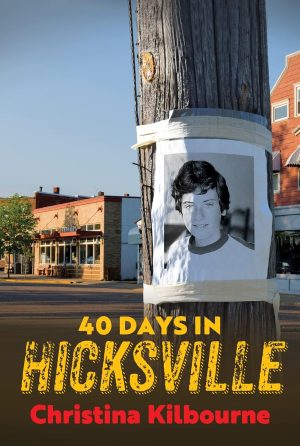Kate doesn’t want to spend one minute in the “Hicksville” her mother moved them to. Zach, the boy who lives next door, tries to befriend Kate even though she ignores him. Then they find the crevasse on her grandfather’s property and the skeletons hidden inside. Kate and Zach start working together to solve the cold case that has silenced her mother for thirty-five years.
Kate doesn’t want to be here; she’s been forced to leave behind an extensive Youtube following of her urban exploration videos, to move with her mom to what might as well be the end of the world: a town she calls Hicksville where her mom grew up.
Zach, the boy next door, is immediately smitten the first day he meets Kate at school. The fact that she’s out of his league doesn’t stop him from trying to make an impact, even if it means driving a ride-on lawnmower to her house to impress her mom until she talks to him.
The two develop an unlikely friendship as Kate learns to open up to her new surroundings and as Zach learns to push himself to impress her. A rumour involving Kate’s grandfather from years ago and the convenience of Zach’s dad being a police officer slowly draw them into the many layers of a long-held town secret in which her grandfather is blamed, although acquitted at the time, for the disappearance of two teenagers 35 years ago. The mystery behind the rumour and two skeletons they later find on her grandfather’s property lead Zach and Kate deeper into the dark history of the town as they begin to piece together what happened.
Kilbourne brilliantly builds the tension in the story as each character is forced to face their deepest emotions, from desire and apathy at the beginning to anger and the guilt that comes from generational trauma later in the story. We see how easily one can go from a simple mistake to cover-up and murder, and how a cold case can continue to simmer years later and divide a community through suspicion and rumour. The story works on different levels so that the closer that Zach and Kate get to the truth, the more Kate’s mom and, in turn, the entire community, are forced to face up to it. They learn the perils of burying the skeletons of their past and allowing them to fester, but also the joys of accepting who they are and of opening themselves to new relationships by giving up suspicion and anger. Kilbourne also portrays, through Kate and her mom, the determination of the human spirit for hope even when hope seems impossible, and the bitter-sweet experience of proving the impossible possible.
– James Steeves


